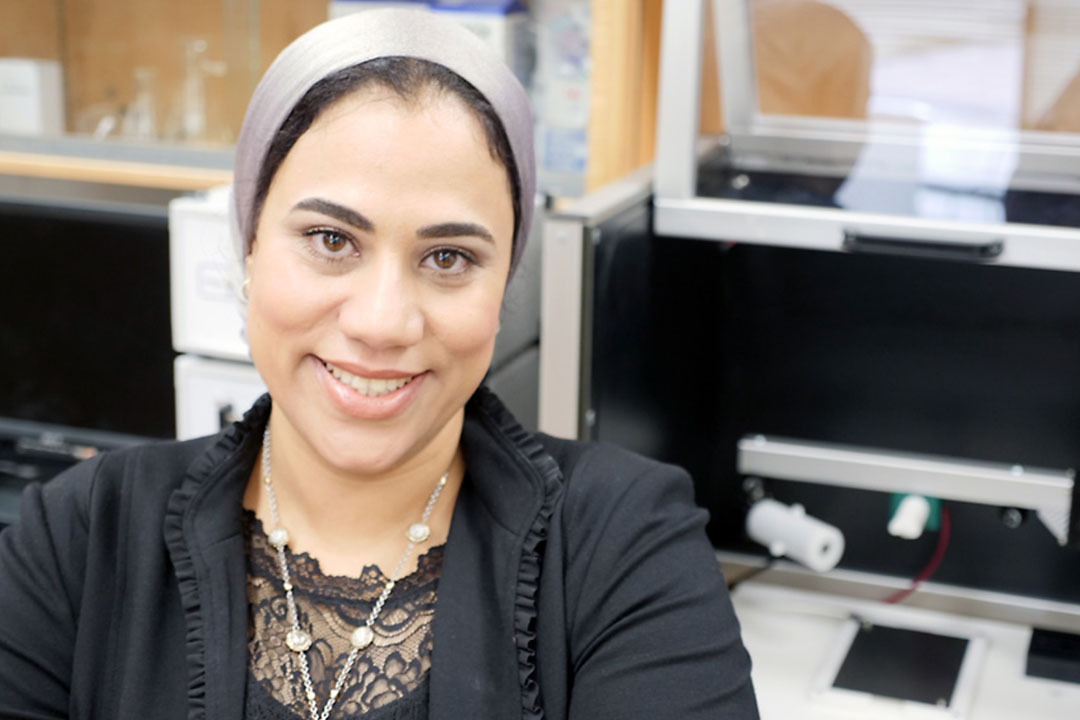
Groundbreaking USask research identifies key blood protein target for improving dialysis
SASKATOON – Innovative work by University of Saskatchewan (USask) researcher Dr. Amira Abdelrasoul (PhD) into membranes used in hemodialysis to cleanse kidney patients’ blood has identified the key protein that creates big problems leading to further health complications and even death.
Abdelrasoul, an associate professor in USask’s College of Engineering, aims to use her findings to develop a new type of membrane that is more compatible with the body. This membrane will create better performance and will be less susceptible to fouling from blood proteins.
Her long-term goal is to create an artificial wearable kidney that would improve the quality of life and survival rate of kidney patients.
One out of 10 Canadians, or about four million people, have kidney disease and the rate continues to rise. Chronic kidney disease has no cure and progresses in stages until the organ eventually fails. Nearly half of new patients are under age 65, and the number of persons living with kidney failure has grown by more than 30 per cent since 2011.
While about 43 per cent of patients receive a kidney transplant—donated organs are in short supply, and some patients aren’t good candidates—the remaining 57 per cent with end-stage kidney disease rely on life-sustaining hemodialysis.
“However, this membrane-based therapy cannot exactly mimic or replicate the function of our healthy kidney,” said Abdelrasoul. “The problem is when blood interacts with the membrane, blood protein routinely gets adsorbed on the surface of the membrane, and that provokes a chain of unwanted biochemical reactions.”
A dialysis patient typically requires three sessions per week with each lasting four to five hours. So, even mild interactions between blood and the membrane can result in patients experiencing health complications in the long-term such as blood clots, anemia, blood poisoning, heart inflammation, infections, and sleep problems, she said.
In a paper published on Feb. 11 in the prestigious high-impact journal Nature, Abdelrasoul and her team present their findings on the “competition” among human serum proteins for adsorption into the polyether membranes (PES) that are used in about 90 per cent of hemodialysis machines.
Abdelrasoul has pioneered the use of customized gold nanoparticles of different sizes and shapes to label and track the movement of specific blood proteins – human serum albumin (HSA), fibrinogen (FB), and transferrin (TRF).
Using the Biomedical Imaging and Therapy beamline at USask’s Canadian Light Source to visualize what occurs when proteins come in contact with a hemodialysis membrane, researchers found that FB dominated both HAS and TRF in adsorption at different depths of the membrane. This happened when they were in a mixture when interacting with the dialysis membrane.
Understanding the competitive adsorption of these serum proteins is important because the adsorption of each protein leads to a different pathway of blood activation. This can ignite a sequence of coagulation or releasing inflammation, which can lead to further health problems, said Abdelrasoul.
Adsorption also means reducing the volume of important proteins returning to the bloodstream, causing issues such as anemia, she said, as well as hindering the efficacy of the membrane in filtering toxins, salts and metabolic wastes from the blood to keep the patient healthy.
Abdelrasoul is using the research findings to develop a new generation of membrane material with different structures and chemical composition with a reduced tendency to interact and attach to the FB protein she has identified as the key source of blood inflammation leading to health complications.
“Improving the performance of hemodialysis applications will provide better quality of life for kidney failure patients and reduce untimely deaths,” she said.
-30-
For media inquiries, contact:
Victoria Dinh
USask Media Relations
306-966-5487
victoria.dinh@usask.ca

